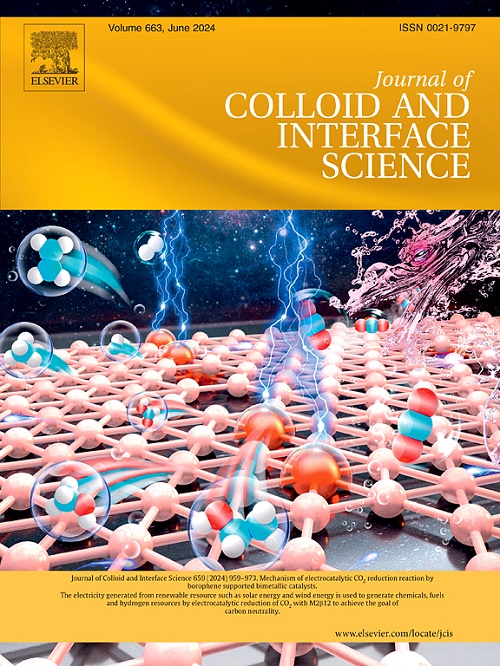Au-Bi2Se3 hybrid nanosheets with enhanced SERS activity for detecting polystyrene plastics
IF 9.7
1区 化学
Q1 CHEMISTRY, PHYSICAL
引用次数: 0
Abstract
Polystyrene (PS) plastics were potentially present in consumer products through the use of plastics packaging. The migration and enduring presence for bioaccumulation posed significant threats to human health and the environment. It was significant to develop a simple and reliable approach for sensitive PS plastics detection. In this study, Au-Bi2Se3 hybrid nanosheets (NSs) were designed and utilized as SERS probes for the detection of PS plastics. The electron transfer from Bi2Se3 to AuCl4− induced the formation of Au NPs on the surface of thin Bi2Se3 NSs. Au-Bi2Se3 hybrid NSs were found to display enhanced SERS activity by using PS plastics as Raman tags. Besides the unique electromagnetic enhanced mechanism from Au NPs, the introduction of Bi2Se3 supported the Dirac plasmon polaritons in electromagnetic modes, and Bi2Se3 with high dielectric constants inhibited the decay of electromagnetic waves. Au-Bi2Se3 hybrid NSs engineered SERS sensor achieved stable and sensitive detection of PS plastics in essence liquid. Different sized PS plastics ranging from 89.3 nm to 1.48 μm were detected with the LODs of ppm levels. These findings highlight the potential of Au-Bi2Se3 hybrid NSs as effective and universal SERS substrates for detecting different sized plastics in real samples.

增强SERS活性的Au-Bi2Se3杂化纳米片用于检测聚苯乙烯塑料
聚苯乙烯(PS)塑料可能通过使用塑料包装存在于消费品中。生物积累的迁移和长期存在对人类健康和环境构成重大威胁。开发一种简单可靠的PS塑料敏感检测方法具有重要意义。本研究设计了Au-Bi2Se3杂化纳米片(NSs)作为SERS探针,用于检测PS塑料。电子从Bi2Se3转移到AuCl4−诱导了薄Bi2Se3 NSs表面上Au NPs的形成。使用PS塑料作为拉曼标签,发现Au-Bi2Se3杂化NSs具有增强的SERS活性。除了Au NPs独特的电磁增强机制外,Bi2Se3的引入在电磁模式下支持Dirac等离子激元的极化,并且具有高介电常数的Bi2Se3抑制了电磁波的衰减。Au-Bi2Se3杂化NSs设计的SERS传感器实现了对香精液中PS塑料稳定、灵敏的检测。测定了89.3 nm ~ 1.48 μm范围内不同尺寸的PS塑料,lod为ppm。这些发现突出了Au-Bi2Se3杂化NSs作为检测真实样品中不同尺寸塑料的有效和通用SERS底物的潜力。
本文章由计算机程序翻译,如有差异,请以英文原文为准。
求助全文
约1分钟内获得全文
求助全文
来源期刊
CiteScore
16.10
自引率
7.10%
发文量
2568
审稿时长
2 months
期刊介绍:
The Journal of Colloid and Interface Science publishes original research findings on the fundamental principles of colloid and interface science, as well as innovative applications in various fields. The criteria for publication include impact, quality, novelty, and originality.
Emphasis:
The journal emphasizes fundamental scientific innovation within the following categories:
A.Colloidal Materials and Nanomaterials
B.Soft Colloidal and Self-Assembly Systems
C.Adsorption, Catalysis, and Electrochemistry
D.Interfacial Processes, Capillarity, and Wetting
E.Biomaterials and Nanomedicine
F.Energy Conversion and Storage, and Environmental Technologies

 求助内容:
求助内容: 应助结果提醒方式:
应助结果提醒方式:


